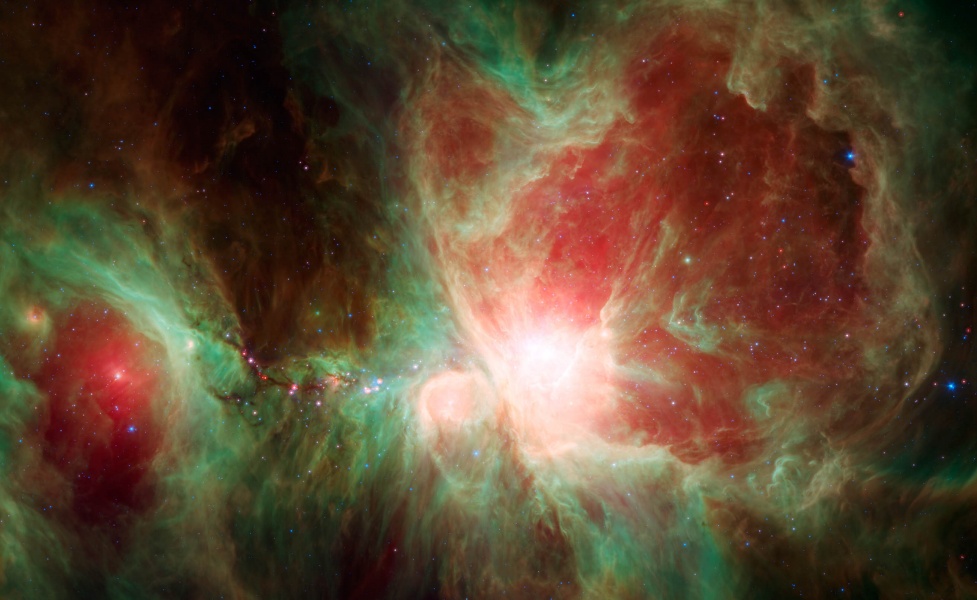Spitzer Telescope's Orion Nebula
Few celestial objects are as adept at stirring the imagination as the Great Orion Nebula. This striking false-color image of the stellar nursery constructed from infrared data taken by the Spitzer Space Telescope reveals regions of the nebula approximately 40 light-years across, assuming its distance of about 1,500 light-years from Earth. The brightest region in both visible and infrared images is around the Trapezium Cluster, a gathering of young, massive stars. However, the infrared image captures many protostars hidden within the nebula, depicted here as dots in various shades of red. The red dots scattered along the dark dust lanes to the left of the Trapezium Cluster include the protostar cataloged as HOPS 68. Recently, it has been discovered that silicate mineral crystals known as olivine exist within the surrounding clouds of these protostars.
